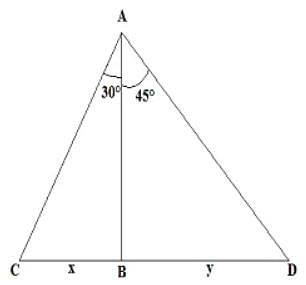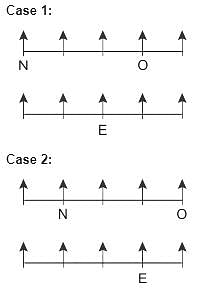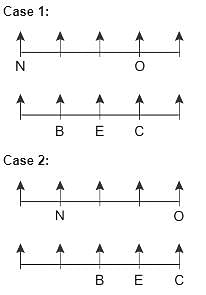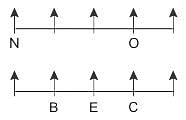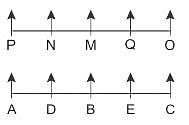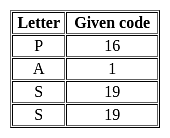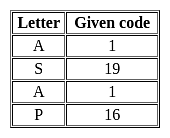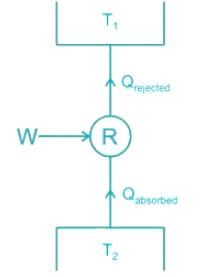HPCL Mechanical Engineer Mock Test - 7 - Mechanical Engineering MCQ
30 Questions MCQ Test - HPCL Mechanical Engineer Mock Test - 7
| 1 Crore+ students have signed up on EduRev. Have you? Download the App |
Two boats are spotted on the two sides of a light house. If the angle of depression made by both the boats from top of the lighthouse is 30° and 45° and the height of the light house is 125 m then find the distance between the two boats.
The formula for finding volume of cylinder is
The area of trapezium in the adjoining figure is

How many kms can a person cover in 5.50 hours at a speed of 36 km/hr?
Directions to Solve
In each of the following questions find out the alternative which will replace the question mark.
Question -
25 : 37 :: 49 : ?
Direction: Study the following information and answer the given questions carefully.
Ten people are sitting in two parallel rows such that people sitting in row 2 are just behind people in row 1. In row 1 - M, N, O, P and Q are sitting and all are facing north. In row 2 - A, B, C, D and E are sitting and all are facing north.
One who sits just behind O is to the immediate right of E. O sits 3rd to the right of N. B is neither at any of the extreme ends nor sits exactly behind O. P sits on a seat which is exactly ahead of A. D doesn’t sit at any of the extreme ends. M is not exactly ahead of E. Number of people sitting between C and E, is the same as the number of people sitting between E and B.
Q. Which of the following sits at one of the extreme ends?
Which of the figures (1), (2), (3) and (4) can be formed from the pieces given in figure?
Problem Figure

If in a certain code language PASS is written as 1611919, then ASAP in that code language is written as:
'Cat' is related to 'Kitten' in the same way as 'Woman' is related to:
Solve:
84% of 9600 + 48% of 6900 = ? + 50% of 2000
Find the next term in the given series.
120, 118, 116, 114, 112, ?
Direction: In the given series , a number/letter/word/term is missing. Choose the correct alternative from the given ones that will complete the series.
72 , 56 , 42 , 30 , 20 , ?
A Carnot cycle refrigerator operates between 250 K and 300 K. Its coefficient of performance is
The assumption made in Euler's column theory is that-
If the surface tension of water air interface is 0.073 N/m, the gauge pressure inside a rain drop
of 1 mm diameter will be
For a fully developed flow through a pipe, For a fully developed flow through a pipe, the ratio of the maximum velocity to the average velocity is
In the case of the bi-axial state of normal stresses, the normal stress on 45° plane is equal to
The carrier material used with strain gauges at room temperature is
A system while undergoing a cycle A-B-C-D- A has the values of heat and work transfers as given
in the table
The power developed in kW is, nearly,
The function of economizer in a boiler is to
The stress at which a material fractures under a large number of reversal of stress is called
Monel metal is used as a filler rod when welding


